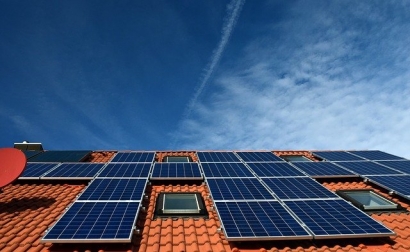
Solar leases and PPAs essentially allow you to rent a solar panel system that a solar company will put on your roof. You can use the energy the system generates to decrease your electricity bill. Most solar leases and PPAs have no upfront costs, but custom down payment and prepaid options are also available.
There is little-to-no maintenance required on your end. The solar company you lease from will be responsible for any maintenance and monitoring the system requires. You do not own the solar panel system under these circumstances. Instead, you will make monthly payments to the solar company.
Upon obtaining a solar lease or PPA, you will enter a long-term contract. On average, these contracts last around 20 years. You can choose to buy the solar panel system or remove it at the end of your contract. You may also buy the system at any point during your lease term.
Each year, the amount you pay for your solar panel system will increase. The amount it increases will be outlined in your contract, but it is usually between 3% and 5%.
Solar leasing and solar PPA are very similar. The biggest difference between the two is that you pay a fixed monthly payment with a solar lease. With a PPA, you pay a fixed amount per kilowatt-hour (kWh) of power generated. Because how much you pay directly correlates with the amount of energy the solar panels produce, you could save more in the long run with a PPA option.
Renewable energy projects can require a large amount of land. These projects can be built on either public or private land. Some jurisdictions have made it easier to lease public lands, such as the U.S. Bureau of Land Management designating specific leasing areas just for projects such as these.
It is always a good idea to be cautious when leasing because many areas have strict environmental regulations in place. Make sure to clear up any possible misunderstandings between you and the landowner before building a renewable energy project. You should also make sure you understand any ownership or sale trade-offs related to the renewable energy certificates (RECs) the system generates.
There are many factors to consider when deciding whether leasing renewable energy is the right choice for you. Savings typically range from 10%-30% of your utility bill, but if your utility bill does not increase each year at a similar rate to the monthly payments of solar leasing and PPA, you may not save money in the long run.
If you can afford to pay cash for a solar system or get approved for a solar loan, these options will save you more money over time. You will also own the solar panel system with a cash payment or solar loan, meaning you will get various solar incentives — namely tax benefits. You will not get these benefits with PPA and solar leasing options because you do not own the solar panel system.
It is also important to keep in mind that having a solar lease or PPA can make it harder to sell your home. You can pass the contract on to the new homeowner. However, this can be a turn off to some buyers. If the new buyer does not want to continue with the PPA or solar lease, you will likely have to pay a fee to break the contract.

